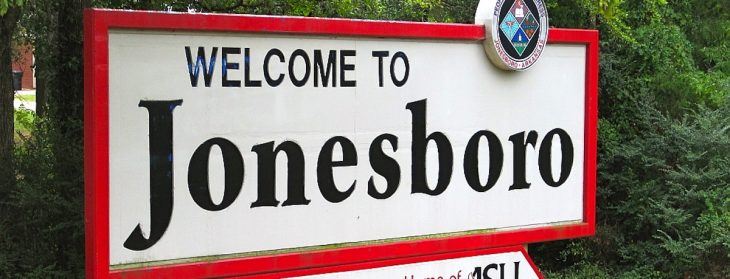Jonesboro Corridor Committee approves several recommendations to move project forward
by August 30, 2018 5:39 pm 1,099 views

Mayor Harold Perrin tasked a group of business and civic leaders to develop ideas that could ultimately lead to a corridor connecting downtown Jonesboro with Arkansas State University. Members of the Corridor Committee unanimously approved five proposals Thursday (Aug. 30) that will be presented to the mayor and City Council for consideration.
The core proposal and the one most favored by the committee is a proposed bike and pedestrian pathway from ASU to the downtown area, a distance of roughly 2.5 miles Corridor Committee Chairman Michael Downing said. ASU-Jonesboro Chancellor Kelly Damphousse, another member of the committee, said there may be a few in the community who don’t understand the importance of the trail, but once its built they will.
“You don’t know what your missing,” he said.
A second recommendation was to appoint a long-term redevelopment committee. In other states, redevelopment of areas like the downtown has three elements, Downing said. State and local incentives are offered, a planning firm is utilized, and a permanent redevelopment committee is appointed to continuously study opportunities for redevelopment zones, he said.
A third recommendation is that the city’s land bank, the Jonesboro Regional Chamber of Commerce and Jonesboro Unlimited, a non-profit organization that promotes economic development in the area, bring a “catalyst” project to the corridor. Locating a job producer from the public or private sector will be key to the corridor’s success, Downing said.
The fourth recommendation was that the city develop a comprehensive plan to create the corridor, and also devise an implementation plan. It can simply be a “wish list,” Downing said. It has to be realistic and functional. The plan needs to be catered around a comprehensive study and that study alone could cost hundreds of thousands of dollars, he said.
A fifth recommendation is that the city host a seminar to present its ideas for the corridor to developers, attorneys, and accountants. The vision for the corridor needs to be clear so that potential investors will be able to get a sense of their return on investment metrics, and how safe an investment in this now blighted part of the city will be, he added.
Downing will take these recommendations to Perrin and then the city council, he said. For more than 40 years pubic officials have talked about a corridor connecting the center of the city to its university, but no formal plan has ever been developed, Perrin said. The corridor would run through one of the poorest and most crime riddled sections of the city, and many of those issues will have to be vetted.
A strategically planned corridor will lead to business and retail growth, will enhance property values, and will provide the city with a critical recruiting too – an enhancement of the quality of life metrics for the city, Downing said.
Damphousse said the city’s downtown is a natural magnet for the ASU student body. He was in the downtown area one night when he ran into hundreds of students enjoying the bars, restaurants, and retail shops. One student’s comments stood out, he said.
“She said ‘I can’t believe this is in Jonesboro,’” he said.
